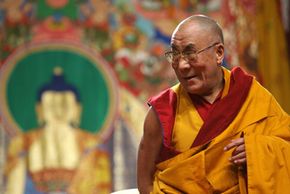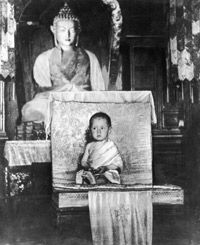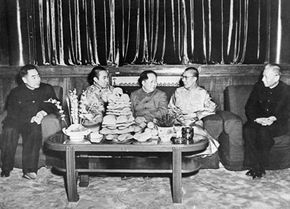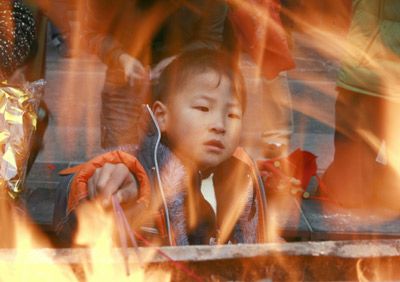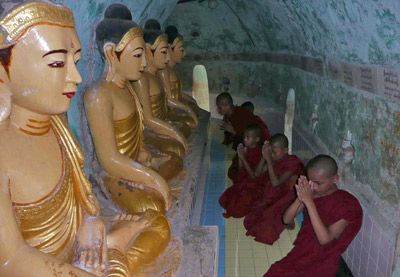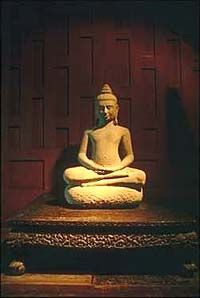The Dalai Lama possesses an unusual brand of celebrity. He's a renowned figure of compassion, wisdom and patience. He's his beleaguered country's spokesman, fighting tirelessly for Tibet's autonomy from China. He's an author, a teacher and a speaker whose ticket sales would make most pop stars envious. But while his celebrity extends beyond traditional bounds to make him as recognizable as any president, pope or author, Tenzin Gyatso, the 14th Dalai Lama, still calls himself a "simple Buddhist monk." He spends 80 percent of his tightly scheduled life following spiritual pursuits, and devotes the other 20 percent to humanitarian issues, religious tolerance and the question of Tibet [source: Dalai Lama].
As a toddler, Tenzin Gyatso was recognized as the incarnation of the Dalai Lama -- Tibet's spiritual and temporal leader. Tibetan Buddhists believe that each Dalai Lama is the reincarnation of his predecessors who, in turn, are the manifestations of Avalokiteshvara, or Chenrezi, the patron saint of Tibet and Bodhisattva of Compassion. Bodhisattvas are enlightened beings who consciously choose to be reborn in order to help others achieve enlightenment. Tibetan Buddhists believe that the 14th Dalai Lama is the 74th manifestation of Chenrezi in a line that began with a Brahmin boy who lived during the Buddha's lifetime.
Advertisement
But the Dalai Lama is also an important political figure for Tibetans. He assumed temporal power just as China began to exercise military control over his country. Less than a decade later, he was forced to escape Tibet and set up an exile government in Dharamsala, India. Since then, he has raised awareness of his country's struggle with China while advocating nonviolent solutions to religious and political disputes. More recently, the now septuagenarian Dalai Lama has challenged China's attempt to name his successor.
In this article, we'll learn about the history and future of the Dalai Lamas, as well as the fascinating life of the 14th Dalai Lama.
Advertisement
